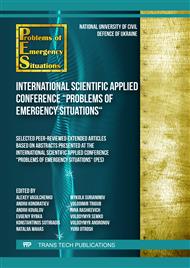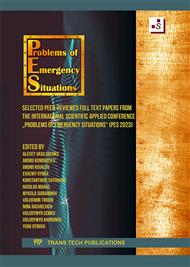[1]
EN 1990:2002/A1:2005/AC. Eurocode: Basis of Structural Design. The European Union Per Regulation 305/2011, Directive 98/34/EC, Directive 2004/18/EC, 2010.
Google Scholar
[2]
Ou Chang-Yu, Deep Excavation. Theory and Practice. London: CRC Press, 2006.
Google Scholar
[3]
J.-L. Briaud, Geotechnical Engineering: Unsaturated and Saturated Soils. Wiley, 2013.
Google Scholar
[4]
H.G. Poulos, Tall building foundation design. Boca Raton: CRC Press, 2017.
Google Scholar
[5]
M. Puller, D. Puller, Deep Excavations: a Practical Manual. 3rd Edition. ICE Publishing, 2017.
Google Scholar
[6]
Y.M. Cheng, C.W. Law, L. Liu, Analysis, Design and Construction of Foundations. London: CRC Press, 2021.
Google Scholar
[7]
R. Katzenbach, S. Leppla, M. Seip, S. Kurze, Value Engineering as a basis for safe, optimized and sustainable design of geotechnical structures. Proc. of the XVI ECSMGE Geotechnical Engineering for Infrastructure and Development. Edinburg, 2015. 601-606.
Google Scholar
[8]
A. Pinto, C. Fartaria, X. Pita, R. Tomásio, FPM41 high rise building in central Lisbon: innovative solutions for a deep and complex excavation. Proc. of the 19th Intern. Conf. on Soil Mechanics and Geotechnical Engineering. Seoul: COEX, 2017. 2029-2032.
Google Scholar
[9]
Van-Hoa Nguyen, N. Nikiforova, The choice of soil models in design of deep excavation in soft soils of Viet Nam. MATEC Web of Conferences. 251 (2018) 04033.
DOI: 10.1051/matecconf/201825104033
Google Scholar
[10]
H-C.Yeow, Case histories of deep excavation in London Clay and limit states design in accordance with Eurocode 7 using advanced soil model. Proc. of the 20th Intern. Conf. on Soil Mechanics and Geotechnical Engineering. Sydney. 2 (2022). 1031-1036.
Google Scholar
[11]
W.T. Lai, Q.Y. Ye, H. Qu, C. Veeresh, Performance of deep excavation using island method- temporary berms and buttress wall retaining system. Proc. of the 20th Intern. Conf. on Soil Mechanics and Geotechnical Engineering. Sydney: Australian Geomechanics Society. 2 (2022). 775-780.
Google Scholar
[12]
O. Mykhailovska, M. Zotsenko, Drilling Waste Disposal Technology Using Soil Cement Screens. Key Engineering Materials. 925 (2022). 211-220.
DOI: 10.4028/p-mk6s47
Google Scholar
[13]
Yu.L. Vynnykov, M.O. Kharchenko, M. Akopian, A. Aniskin, Efficient foundation pits solutions for restrained urban conditions. Academic Journal. Series: Industrial Machine Building, Civil Engineering. Poltava National Technical Yuri Kondratyuk University. 1(56)' (2021). 65-75.
DOI: 10.32822/naftogazscience.2018.02.065
Google Scholar
[14]
N.L. Zotsenko, Y.L. Vinnikov, Long-Term Settlement of Buildings Erected on Driven Cast-In-Situ Piles in Loess Soil. Soil Mechanics and Foundation Engineering, 53 (2016) Is. 3. 189-195, Springer Science + Business Media, New York.
DOI: 10.1007/s11204-016-9384-6
Google Scholar
[15]
Yu.L. Vynnykov, M.O. Kharchenko, S.M. Manzhalii, Reinforcement of a deformed structure on the pile foundation. IOP Conference Series: Materials Science and Engineering. 1021(1) (2021) 012030.
DOI: 10.1088/1757-899x/1021/1/012030
Google Scholar



